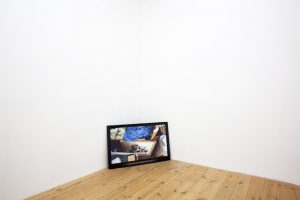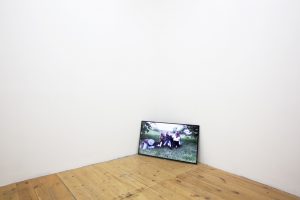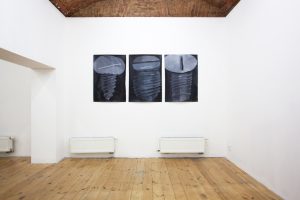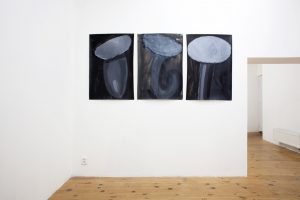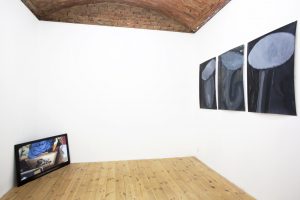8/11 – 6/12/2019
Even when the idea for this exhibition was first hatched two years ago, it was clear that it would be less of a joint project and more of a duet. We met Lenka and Marek in Vasil Artamonov’s studio at FaVU not as an artistic duo but as two independent genre painters, each with their own distinctive style inspired, among other things, by the realism of the first two decades of the 20th century. Both artists share a strong common interest in the humanist dimension of their depicted subjects, and their worlds of portrait painting and still-lifes have harmonically filled so-called “traditional” art forms with still-vibrant themes. Two years is a long time for an artist – a period of joyful and unfettered discursive leaps, experiments, and trial-and-error. Quite understandably, everything is different today, and their joint exhibition is envisioned as a meeting of two, to a certain extent, antithetical worlds.
Štěpánková’s art has so far been characterized by a highly distinctive approach to portraiture – colorfully dense and compact. One might say that her paintings are primarily meant to be encounters with loved ones – direct and unflinching gazes of beautiful beings, sensory and innocent all at once. At the same time, her portraits have ever more openly asked what role women play in the world of art. Her most recent work with small-scale drawings and video is merely an extension of this approach – except that instead of creating portraits of people she is looking at how they see the world around them. Their individual features no longer matter; their silent presence in the form of their relaxing cat is enough. In her moving pictures, Štěpánková makes excellent use of film’s typical characteristic – the possibility of using the camera as the viewer’s eye, to pull the observer directly into the action and literally accompany them on their path. Her images, free of editing or action, possess an unsettling sense of tension, even though we are watching the everyday habitual movement of one woman or a group of girls resting at sunset. Our attention is drawn to minor but meaningful gestures.
Marek Tischler has successfully avoided the more lofty forms of art and turns his back on higher matters in life. He is more likely to transform the world around him into a work of art, and so the chosen motifs of his paintings are the most elemental of objects, which he uses as a means for experimenting with shapes. The rules and purpose of this game depend on our intimate knowledge of ordinary items and especially their function. He is capable of producing a captivating image with just the simplest use of color and his typical caricature style. His cycle of monothematic paintings on the subject of screws, bolts, and other fasteners is more than just an aesthetic range of nuances of intensity and degree – it is primarily an old-fashioned way of identifying the importance or even superiority of the concept of repetition, an understanding of the fact that two same things differ from one another or are identical or are in some way related or could even form a meaningful pair, group, or whole that holds our world together.
curated by Michal Pěchouček & Petra Steinerová



